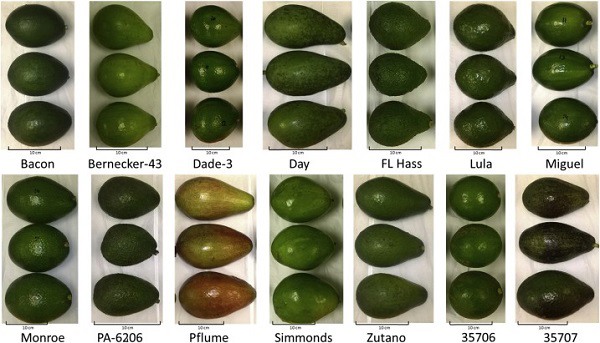Worldwide avocado consumption is growing due to potential health benefits. Most research has been focused on Hass cultivar, whose performance is not well in Florida. Scientists at USDA-ARS Horticultural Research Laboratory of Ft. Pierce (Florida, USA) have evaluated the profile of fatty acids and volatile organic compounds (VOCs) in 14 avocado genotypes grown in East-Central Florida conditions and compared to Hass cultivar.

Results showed that two saturated and five unsaturated fatty acids were detected. Total oil content (TOC) was 11–25%, with 58.2–71.5% unsaturated fatty acids (UFA). FL Hass contained 20% TOC, near the average for genotypes tested, but with a low UFA of 61.9%. While PA-6206 (a Hass x Bacon seedling) and 35707 (a Catalina seedling) had higher TOC and UFA than other genotypes. The mostly West Indian types such as Simmonds, Day, Pflume and Miguel had low TOC. Detected VOCs were acetaldehyde, hexanal, (E)-2-hexenal, limonene, α-cubebene, α-copaene, and β-caryophyllene. Most genotypes contained most of the VOCs. Monroe lacked C6 aldehydes, and Pflume, Bernecker-43, Lula and 35707 lacked some or all sesquiterpenes.
"Generally, the investigation showed a large variation in total oil content among 14 avocado genotypes tested. Oleate, palmitate and linoleate resulted the major fatty acid components in all genotypes, while acetaldehyde, C-6 aldehydes and mono/sesquiterpenes were the major VOCs", the scientists conclude.
Source: Sajid Ali, Anne Plotto, Brian T. Scully, David Wood, Ed Stover, Nancy Owens, Cristina Pisani, Mark Ritenour, Muhammad Akbar Anjum, Aamir Nawaz, Safina Naz, Jinhe Bai, 'Fatty acid and volatile organic compound profiling of avocado germplasm grown under East-Central Florida conditions', February 2020, Scientia Horticulturae, Volume 261, 109008.
